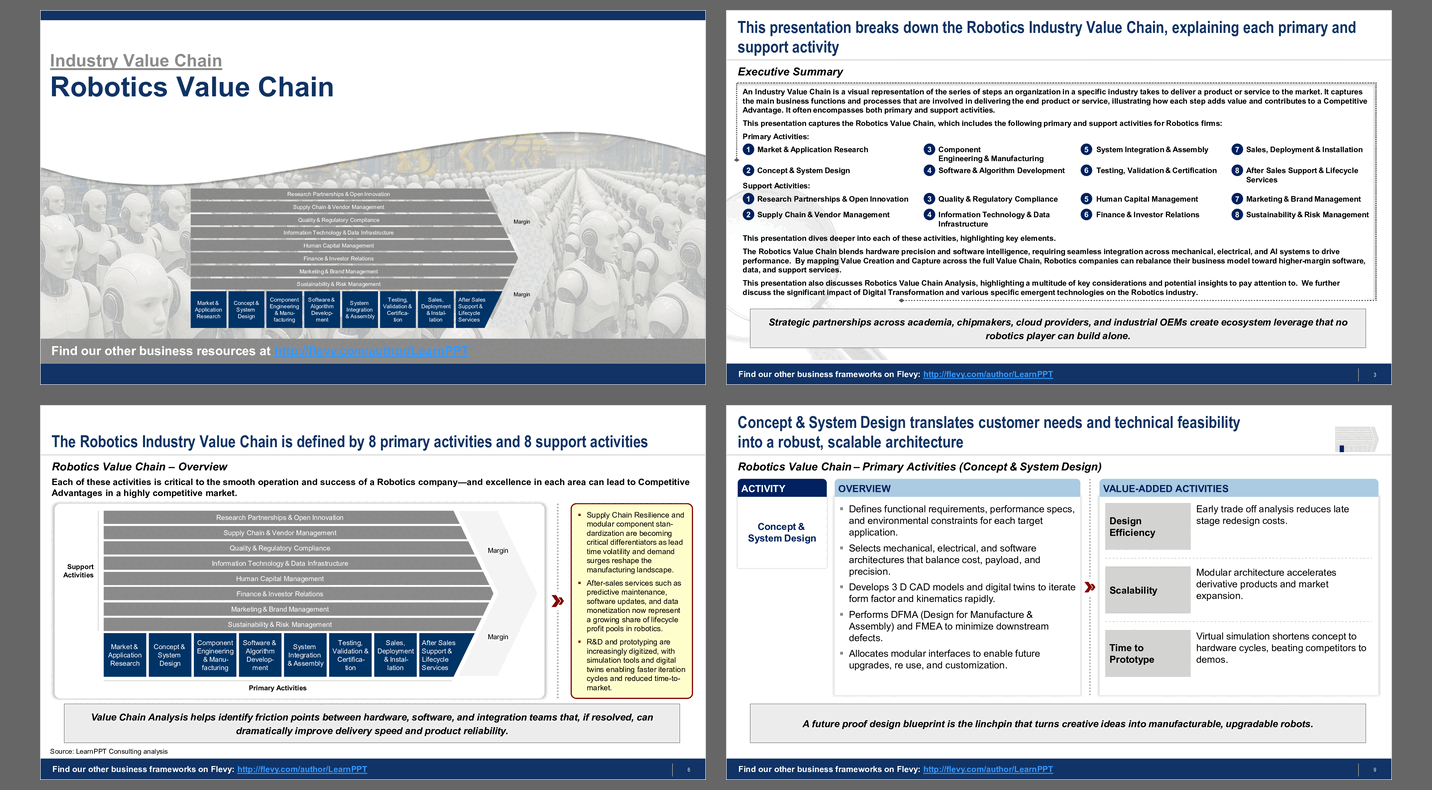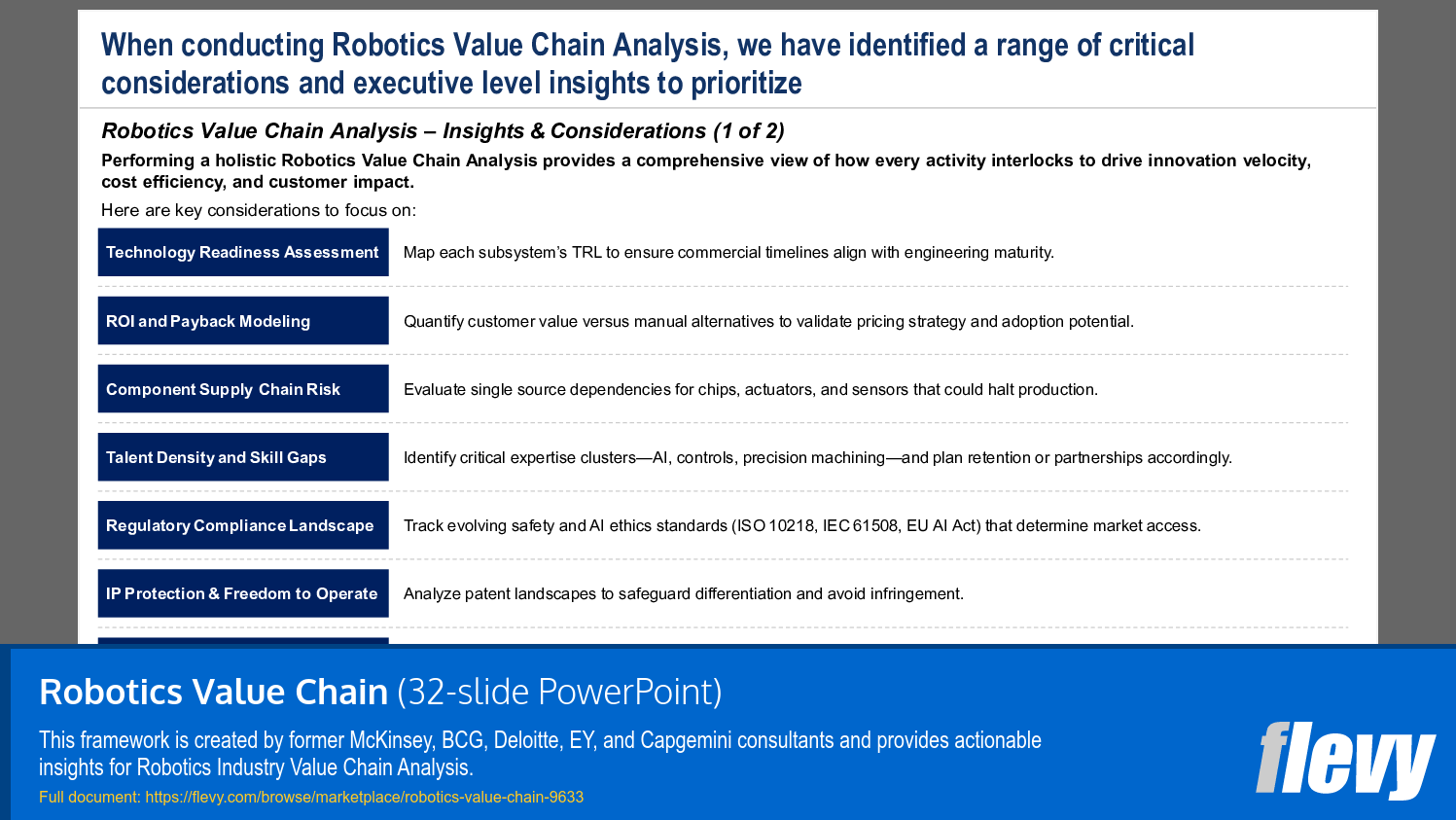Robotics Value Chain (PowerPoint PPTX Slide Deck)
PowerPoint (PPTX) 32 Slides
BENEFITS OF THIS POWERPOINT DOCUMENT
- Provides a framework for examining the Robotics Industry.
- Identifies 13 important insights and considerations for Robotics Value Chain Analysis.
- Provides a detailed breakdown of the impact of Digital Transformation across the Robotics Industry Value Chain.
MANUFACTURING PPT DESCRIPTION
An Industry Value Chain is a visual representation of the series of steps an organization in a specific industry takes to deliver a product or service to the market. It captures the main business functions and processes that are involved in delivering the end product or service, illustrating how each step adds value and contributes to a Competitive Advantage. It often encompasses both primary and support activities.
This presentation captures the Robotics Value Chain, which includes the following primary and support activities for Robotics firms:
Primary Activities
1. Market & Application Research
2. Concept & System Design
3. Component Engineering & Manufacturing
4. Software & Algorithm Development
5. System Integration & Assembly
6. Testing, Validation & Certification
7. Sales, Deployment & Installation
8. After Sales Support & Lifecycle Services
Support Activities
1. Research Partnerships & Open Innovation
2. Supply Chain & Vendor Management
3. Quality & Regulatory Compliance
4. Information Technology & Data Infrastructure
5. Human Capital Management
6. Finance & Investor Relations
7. Marketing & Brand Management
8. Sustainability & Risk Management
This presentation dives deeper into each of these activities, highlighting key elements.
Value Chain Analysis helps identify friction points between hardware, software, and integration teams that, if resolved, can dramatically improve delivery speed and product reliability. Supply Chain Resilience and modular component standardization are becoming critical differentiators as lead time volatility and demand surges reshape the manufacturing landscape. After-sales services such as predictive maintenance, software updates, and data monetization now represent a growing share of lifecycle profit pools in robotics. R&D and prototyping are increasingly digitized, with simulation tools and digital twins enabling faster iteration cycles and reduced time-to-market.
The Robotics Value Chain blends hardware precision and software intelligence, requiring seamless integration across mechanical, electrical, and AI systems to drive performance. By mapping Value Creation and Capture across the full Value Chain, Robotics companies can rebalance their business model toward higher-margin software, data, and support services.
This presentation also discusses Robotics Value Chain Analysis, highlighting a multitude of key considerations and potential insights to pay attention to. We further discuss the significant impact of Digital Transformation and various specific emergent technologies on the Robotics industry.
Got a question about the product? Email us at support@flevy.com or ask the author directly by using the "Ask the Author a Question" form. If you cannot view the preview above this document description, go here to view the large preview instead.
Source: Best Practices in Manufacturing, Value Chain Analysis PowerPoint Slides: Robotics Value Chain PowerPoint (PPTX) Presentation Slide Deck, LearnPPT Consulting
MANUFACTURING PPT SLIDES










